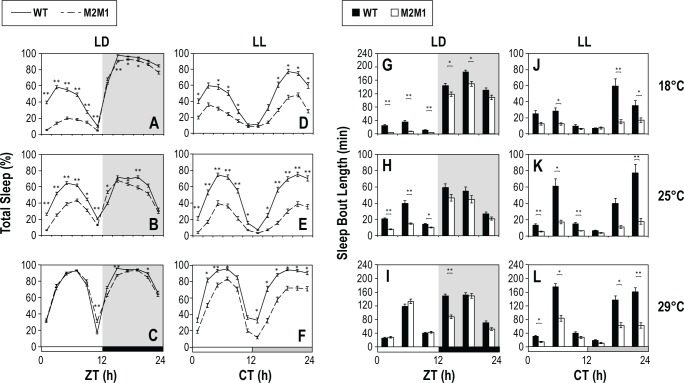Figure 3.
Exposure to light during the night strongly reduces sleep consolidation in p{dmper/M2M1} flies compared to wild-type controls. (A-F) Shown are group averages for the percentage of female flies sleeping during 4-h time-windows throughout a 24-h day for either p{dmper/8:8} (WT; black line) or p{dmper/ M2M1} (dashed black line) adult flies maintained at the indicated temperatures (right of panels) and light/dark conditions (top of panels). LD, 12-h light/12-h dark; LL, constant light. For LD, sleep data from the last 3 days were pooled (see Figure 1G–1I), whereas for LL, only data from the first day were used. White, black, and light gray horizontal bars denote periods of light, dark, and “subjective nighttime” in LL, respectively. (G-L) The results are based on the flies used in panels A-F [p{dmper/8:8} (WT; black rectangle) or p{dmper/M2M1} (white rectangle)] and show group averages for median durations of sleep bouts. For each genotype and entrainment condition, data from at least 16 flies were used to generate the profiles shown. Values for p{dmper/8:8} (WT) and p{dmper/M2M1} flies are significantly different using student's t-test; * P < 0.05; ** P < 0.005. Male flies showed similar results as females (data not shown).

